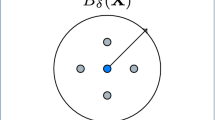Abstract
In this paper, a damage mechanics approach is shown to be useful for the prediction of fatigue fracture in metal forming tools. The approach can be applied in the general situation of under complex loading at elevated temperature. A damage criterion used considers initiation and propagation of cracks and fracture to be the accumulation of damage up to certain critical levels. This criterion is based on ductile properties of material. These properties are determined by the dependence of critical local strain on stresses and temperature and by the dependence of intensity of damage accumulation on the same parameters. The testing equipment and test methods are described. The results of an investigation of H13 hot work steel are included. The capability of the method is demonstrated by the prediction of crack initiation in a `disc-on-disc' experiment. This paper presents clear description of fatigue damage based on experiments.
Similar content being viewed by others
References
Bogatov, A.A., Smirnov, S.V., Bykov, V.I. and Nesterenko, A.V. Author's Certificate No. 1422090 (USSR), GO1N 3/10 A Device for testing specimens under three axis loading.
Bogatov, A.A., Smirnov, S.V. and Miziridsky, O.I. (1985). Resource of Metal Plasticity by Metal Forming, Metallurgiya, Moskow (in Russian).
Bridgman, P.W. (1970). The Physics of High Pressure, Dover Publications, NewYork.
Efros, V.M., Gladkovsky, S.V. and Smirnov, S.V. (1992). Phase transformation and strengthening of metastable Fe-Mn steels under high pressure, In: Proceeding of 12 Intern. Conf. in Bangalore, Recent Trends in High Pressure Research, Oxford, 725–727.
Fuchs, H.O. and Stephens, R.I. (1980). Metal Fatigue in Engineering, Wiley, NY.
Golos, K.M. (1997). A hypothesis of cumulative damage for fatigue crack initiation and propagation, In: Proceeding of 9th Intern. Congress On Fracture, 3, Pergamon Press, U.K. 1353–1360.
Hashin, Z. and Rotem, A. (1978). A cumulative damage theory of fatigue failure. Journal of Materials Science and Engineering 34, 147–160.
Kachanov, L.M. (1986). Introduction to Continuum Damage Mechanics, Kluwer Academic Publishers, Dordrecht.
Lemaitre, J. and Chaboche, J. (1975). A non-linear model of creep-fatigue damage cumulation and interaction, In: Mechanics of Visco-Plastic Media and Bodies (Edited by J. Hutt), Springer-Verlag, Berlin, 291–300.
Lusas Fea Ltd. (1990). Surrey, U.K.
Manson, S.S. (1981). Thermal Stress and Low Cycle Fatigue, R.E. Krieger Pub. Co.
Pan, Z. (1993). New concept: fatigue damage mechanics, In: proceeding of 5th Intern. Conf. On Fatigue and Fatigue Thresholds, Vol. 1, Engineering Materials Advisory Services Ltd., UK, 263–268.
Smirnov, S.V. and Lapovok, R. (1990). On the criterion of non-monotony in phenomenological fracture theory, In: Collected articles, Plastic Metal Working, Ecaterinburg 47–53 (in Russian).
Smirnov, S.V. and Bogatov, A.A. (1993). Workability resource of machine elements and mechanism under plastic and mechanical deformations. Novye Mater. i Technol. Mashin 6(1) (in Russian).
Author information
Authors and Affiliations
Rights and permissions
About this article
Cite this article
Lapovok, R., Smirnov, S. & Shveykin, V. Damage mechanics for the fracture prediction of metal forming tools. International Journal of Fracture 103, 111–126 (2000). https://doi.org/10.1023/A:1007593623392
Issue Date:
DOI: https://doi.org/10.1023/A:1007593623392




